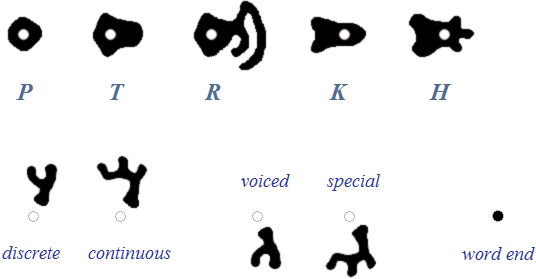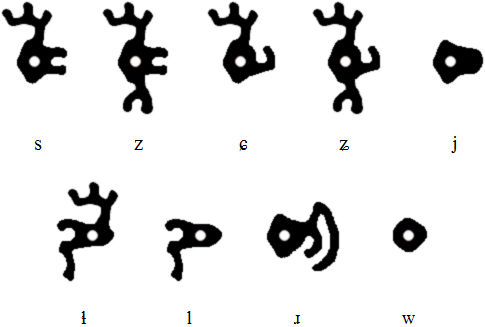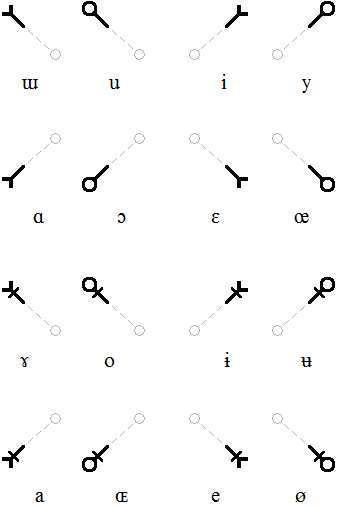This is a script modeled roughly on the component-based scripts of SIGIL. It follows after Elektrum in a series of original scripts founded on phonetic principles. The name comes from Swedish “Drunken Moose”, and the script is inspired by stories of moose eating fermented apples. (Thanks to Mattias Persson for help with the name.)
Consonants
The basis of consonants is an eyed “head” upon which various arrangements of modifying “antlers” are attached. Each head-base signifies a phonetic location, with antlers above specifying a discrete or continuous articulation, and antlers below specifying voicing (no antler means unvoiced). After each word or separable phoneme-stream comes a dot.
Here is the full set of base+modifers for the P series. For syllabic-final or vowel-less consonants, the “eye” is filled in – the eye is the focus for vowels (see below).

Some other letters are formed specially. The sibilants are derived from the T head. The laterals are derived from the K head. Liquids and semivowels have no antlers.
Vowels
The vowels are diacritics which neither attach to the consonants nor sit upon them. They may be placed almost anywhere, as long as they point to the eye of their consonant, along the radials shown here. The mid-cardinal angles mimick to some extent the relative location of the tongue. Rounded vowels have a circle at the tail of their “arrow” and centralized vowels have a cross-tick. (This arrangement is also seen in Beryllian and Cairngorm.)
Developments
Mattias Persson created a clever variation of this script called Alcesian, using bits of a bold Times New Roman font. In turn, I made a light serifed version called Full Aelg Roman, based on Mattias’ idea.
Sample text
The original version of Full Aelg has an almost paleolithic, rock-art appearance:
Shall I compare thee to a summer’s day?




